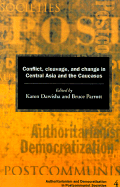Book contents
- Frontmatter
- Contents
- List of tables
- List of contributors
- Preface
- 1 Perspectives on postcommunist democratization
- 2 Democratization and political participation: research concepts and methodologies
- The Caucasus
- 3 Political transformations in postcommunist Armenia: images and realities
- 4 Azerbaijan's struggle toward democracy
- 5 Democratization in Georgia
- Central Asia
- Appendix
- Index
3 - Political transformations in postcommunist Armenia: images and realities
Published online by Cambridge University Press: 01 June 2011
- Frontmatter
- Contents
- List of tables
- List of contributors
- Preface
- 1 Perspectives on postcommunist democratization
- 2 Democratization and political participation: research concepts and methodologies
- The Caucasus
- 3 Political transformations in postcommunist Armenia: images and realities
- 4 Azerbaijan's struggle toward democracy
- 5 Democratization in Georgia
- Central Asia
- Appendix
- Index
Summary
Introduction
Themes and argument of the chapter
Since 1991, Armenia has become recognized as an independent republic, complete with a popularly elected president and parliament, its own army, and the signs and symbols of independent statehood. It has become a member of international organizations and a signatory to international treaties and covenants. Nevertheless, I argue in this paper that it is not yet possible to speak of or predict with any certainty the pace or direction of democratic development in Armenia. Janus-like, Armenia presents one face to foreign observers, another to its own citizens. While the foreign community follows with attention the course of electoral politics, party formation and activity, parliamentary process, and the emergence of a plethora of nongovernmental organizations (NGOs), for its own citizens, life in Armenia has become a disturbing mixture of chaos and authoritarianism.
Until 1995, Armenia maintained the image of a democratic republic which largely respected the civil rights of its citizens. It was among the first Soviet republics whose population mobilized around a national and democratic agenda, the only republic to organize a referendum on independence according to Soviet law, and the only Transcaucasian republic continuously ruled since independence by a democratically elected president. Armenian leaders frequently contrasted their republic to Georgia and Azerbaijan, unstable Transcaucasian neighbors racked by coups, ethnic conflict, and civil unrest.
A historical legacy of statelessness and subordination, and after 1991, severe economic crisis and war, have left many Armenians too busy struggling to survive to maintain active political engagement.
- Type
- Chapter
- Information
- Publisher: Cambridge University PressPrint publication year: 1997
- 20
- Cited by

